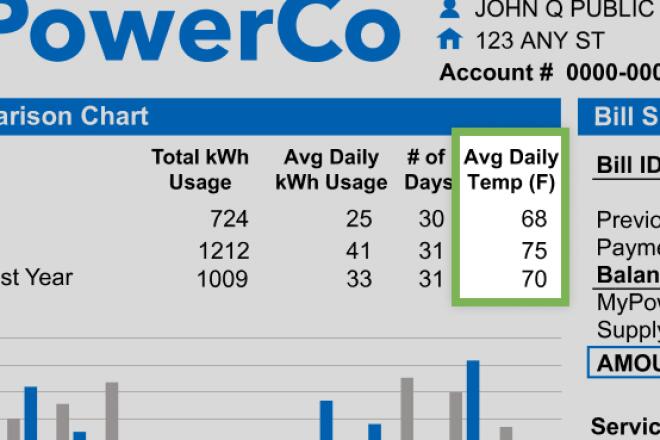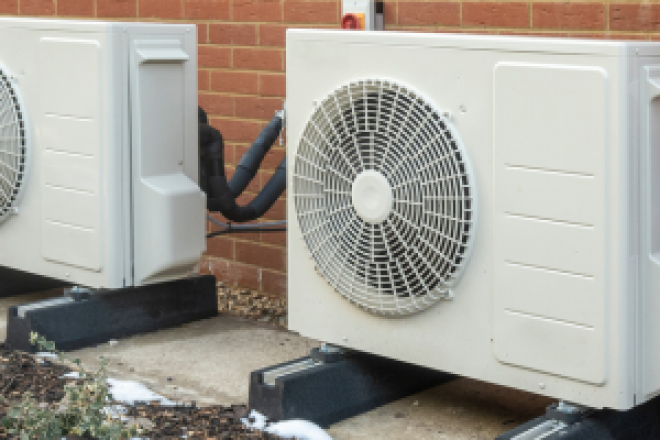Seal in the Savings with These Weatherization Tips
Saving money on energy doesn't have to require a major financial investment, a significant time commitment or getting accustomed to the latest technology, like a smart thermostat or smart appliance. Weatherizing your home is an easy, cheap, and effective path to considerable savings on energy.
Weatherization is the process of protecting your home against the elements (including wind, rain and sunlight) to improve energy efficiency. By completing just a few small weekend projects, you could save up to $400 a year on your energy bills, while improving your home's comfort and reducing its carbon footprint.
Use these four tips to optimize your home's energy efficiency and lock in the energy savings:
1. Stop leaks around doors and windows with weather-stripping
 Weather strips are the most straightforward insulation project to weatherize your home. These rubber strips can be applied to all of your doors and windows around your house. Want to know if you even need weather strips? As a rule of thumb, if light shines through the cracks of your doors and windows, your heating and air can leak out as well. By simply sliding a rubber stop into the crack, you can save energy and improve the comfort of your home. Don’t forget to apply weather strips to your attic entrance and fireplaces as well. Heat rises and can easily slip out through these openings. If you’re looking for something more permanent, caulk and insulation may be a better fit for you.
Weather strips are the most straightforward insulation project to weatherize your home. These rubber strips can be applied to all of your doors and windows around your house. Want to know if you even need weather strips? As a rule of thumb, if light shines through the cracks of your doors and windows, your heating and air can leak out as well. By simply sliding a rubber stop into the crack, you can save energy and improve the comfort of your home. Don’t forget to apply weather strips to your attic entrance and fireplaces as well. Heat rises and can easily slip out through these openings. If you’re looking for something more permanent, caulk and insulation may be a better fit for you.
2. Seal smaller gaps and cracks with caulk
Caulk is a permanent fibrous material that can be easily applied to cracks and small gaps in the structure of your home. Caulk can be used on heating ducts, leaking water pipes, and window frames on the outward facings of your windows. By applying this material sparingly to various gaps and cracks within your home—you can seal in your heating and air. Though it may seem insignificant to fill in the cracks on your home, sealing a drafty home can save you 20 percent or more on heating or cooling, according to the Department of Energy.
If you come across a crack in your home that is too large for caulk, you may what to use insulation instead. Insulation can be used for larger spaces but works in a similar way to caulk. By applying insulating materials around heating ducts and the floor of your attic you can keep the heating and air where you want it. You can apply insulating materials yourself or hire a company to do it. Whichever way you decide, it is estimated that weatherization tools, like insulation, will save you around $2 for every $1 invested over the course of a lifetime.
3. Keep your home the right temperature with window coverings
Window films are an easy way to stop heating and air from escaping. Films can be purchased at any hardware store and are made specific to various climates. Some films reduce harmful UV rays and reduce glare and heat. Other films are designed for a colder climate and focus on insulating a house, so heat does not escape through the windows. You can compare various window films here and pick the best fit for your home’s climate.
Want a removable method of climate proofing your windows? Simply hanging thermal curtains can keep warm air from escaping during the winter months. These also work during the summer months, keeping your cool air from escaping. While curtains have to be closed for them to insulate your house- many choose this easy option and close their curtains when they leave the house.
4. Look into an energy audit or weatherization assistance program
An energy audit is a way to explore how your home uses energy. It helps you understand your energy bill and possible places where you could be wasting energy. Once you identify these problem areas, you can make smart decisions about your future energy usage. An energy audit is a great first step for those looking to save money on their energy bill.
Many people even qualify for weatherization assistance programs. If eligible, these programs will walk you through the process of weatherization, including an energy audit down to the insulation of various energy saving products. Though eligibility varies state to state, 20 to 30 million Americans qualify for some weather assistance programing. Click here to get connected with a weather assistant program in your state. You may have to email whoever is in charge of the weather assistant program to get an application.
Weatherizing your home helps you save money, reduce your carbon footprint, and improve the comfort level of your home. Weather assistant programs walk you through all the steps to weatherize your house at a fraction of the cost. The infrastructure for energy saving is here; it’s simply up to you to use it.
Want to learn more about other ways to save energy at home? Check out our new resources on no-cost/low-cost ways to save, how renters can save on energy and tips on the latest technology for reducing home energy use.



